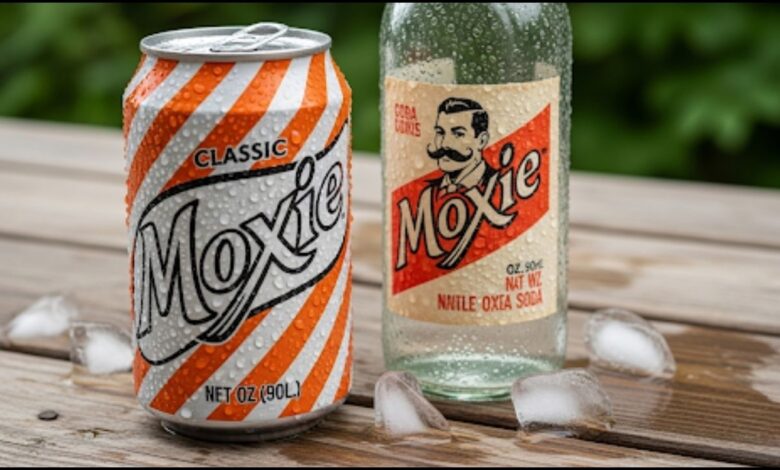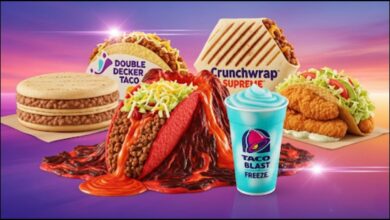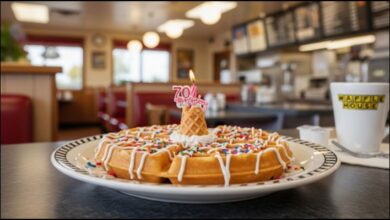The Moxie Soda Legacy: How a 130-Year-Old Bitter Drink Forged a Fiercely Loyal Following
The 139-year-old Moxie soda legacy thrives on a fierce, regional following. Known for its distinctive, bitter taste from gentian root, this New England soft drink inspires a cult following, with fans often buying it by the case.

In an era dominated by global beverage giants, a 139-year-old soft drink with a uniquely bitter taste continues to command a fanatical devotion, particularly in New England. The Moxie soda legacy is defined not by mass-market appeal, but by a passionate fan base whose loyalty prompts them to buy the regional favorite by the case, ensuring the survival of America’s first mass-produced soda.
A Flavor That Defines a Brand
At the heart of Moxie’s enduring identity is its polarizing taste. Unlike the sweet, caramel notes of mainstream colas, Moxie’s distinctive flavor comes from gentian root extract, a bittering agent more commonly found in cocktail bitters and herbal medicine. The result is a sharp, medicinal taste that is often an acquired one.
“It is certainly not a beverage for the timid,” said John Swansburg, a writer and cultural historian who has written about the soda for Slate. For its devotees, the challenging flavor is a point of pride and a marker of authenticity in a homogenized market. This “love it or hate it” quality has been instrumental in creating a self-selecting group of ardent fans who see drinking Moxie as a statement of individuality.
This loyalty often manifests in unique purchasing habits. Due to its limited availability outside of the American Northeast, visiting fans and former residents are frequently seen stocking up. “It’s not uncommon for someone to come in and buy two, three, sometimes four cases at once,” said the manager of a Hannaford supermarket in Portland, Maine, in a report by the Bangor Daily News. “They say they can’t get it where they live and want to make it last.”
Understanding the Cult Following and Its Origins
The Moxie soda legacy began long before the invention of Coca-Cola. In 1885, Dr. Augustin Thompson of Union, Maine, began mass-marketing “Moxie Nerve Food,” a carbonated tonic he claimed could cure a range of ailments from nervousness to paralysis. The name itself became an American slang term for courage and determination.
- 1876: Moxie Nerve Food created by Dr. Augustin Thompson.
- 1885: First bottled and sold to the public as a soda.
- Early 1900s: Moxie becomes one of America’s most popular soft drinks.
- Post-WWII: Popularity declines amid competition.
- 2005: Becomes the official soft drink of Maine.
- 2018: The Coca-Cola Company acquires the brand.
While its medicinal claims faded, its popularity as a beverage soared in the early 20th century, for a time outselling its now-famous competitors. Over the decades, as larger brands came to dominate the national market, Moxie solidified its status as a regional icon, particularly in Maine, which named it the state’s official soft drink in 2005. This deep-rooted regional identity is a key driver of its cult following.
Preservation Under a Beverage Giant
The brand entered a new chapter in 2018 when it was acquired by The Coca-Cola Company. The announcement was met with trepidation by longtime fans, who feared the beverage giant might alter the historic formula or discontinue the niche product. These concerns are common when large corporations acquire beloved local brands, according to beverage industry analysts.
In response to the acquisition, a Coca-Cola spokesperson stated the company was committed to “stewarding the brand with the care and respect it deserves.” According to reports from Beverage Digest, Coca-Cola has largely maintained the original formula and has focused on strengthening its distribution within its core New England market rather than attempting a risky national rollout. The goal for a brand like Moxie isn’t necessarily to compete with Coke or Pepsi on a national scale,” said Caroline Levy, a beverage market analyst. “Instead, the value lies in its authentic story and its dedicated, existing consumer base. For Coca-Cola, it’s a portfolio piece with a rich history.
A Festival for a Flavor
Nowhere is the passion for this New England soft drink more evident than at the annual Moxie Festival in Lisbon, Maine. What began as a small local event has grown into a three-day celebration that attracts tens of thousands of visitors each July, according to festival organizers. The event features Moxie-themed parades, recipe contests, and historical exhibits. It serves as a pilgrimage for fans from across the country, reinforcing the communal bonds that have formed around the beverage. The festival underscores that for many, Moxie is more than a soda it is a tangible link to regional heritage, nostalgia, and a shared, quirky identity.
As consumer trends increasingly favor craft products and authentic brand stories, Moxie’s long history and unique profile may position it for continued, if quiet, success. Its survival is a testament to the power of a dedicated community that has kept its spirit and its distinctive flavor alive for over a century.
Pepsi Vibe: Details on the New Pepsi Soda Line Aimed at a New Generation of Drinkers








